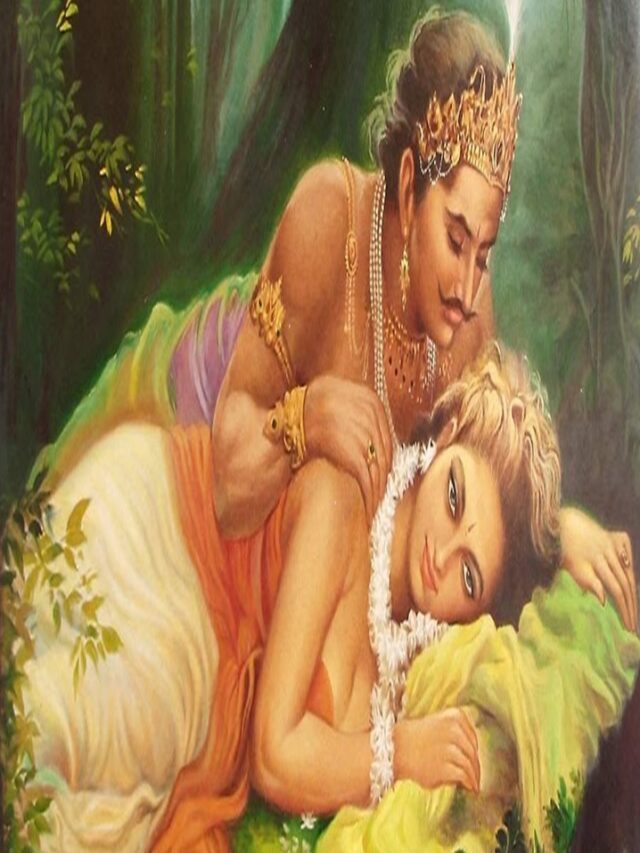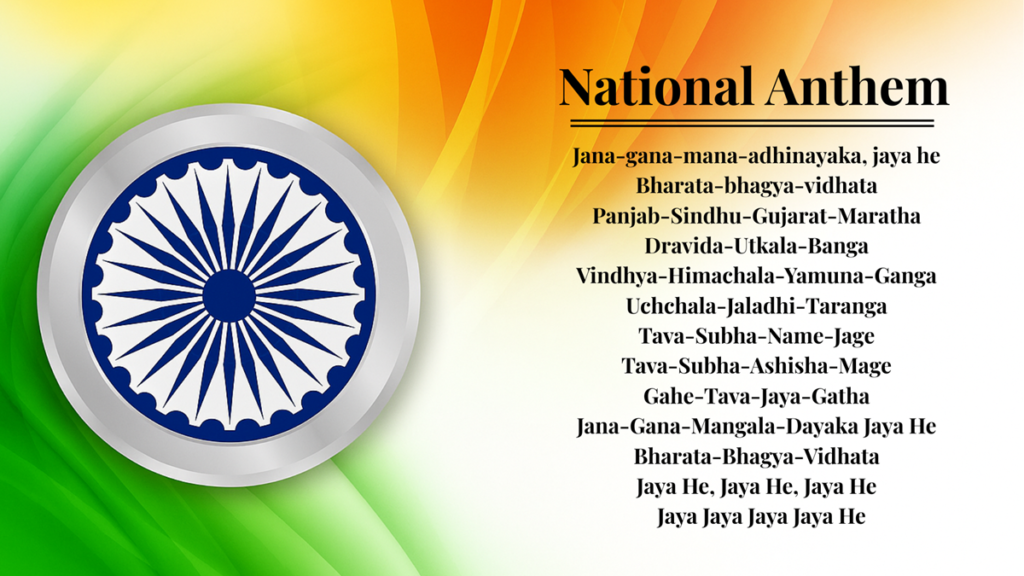Table of Content
Contents
The National Flag of India, also known as Tiranga, is more than a tricolour swath of fabric; it is a reflection of unity and sovereignty, and of the collective lived experience of the millions of sacrifices made in the struggle for freedom. Each time the flag is raised—whether at the grand Republic Day parade in New Delhi or at the small village school assembly—it evokes a palpable sense of nationalism—pride, and respect for our country and our inclusion in it.
For students, educators, and citizens, learning about the Indian national flag can provide a wonderful link with our nation’s values and democratic legacy. The Tiranga serves as a statement of peace, courage, and progress. Rising above regional, cultural, linguistic, and other divides, the flag speaks to over a billion hearts.
Historical Evolution of the Indian National Flag
The Evolution of the Indian flag begins early in the freedom struggle. From the Calcutta Flag and early prototypes to the Swaraj flag introduced by the Indian National Congress, each one indicated the mood of the movement. The final design was developed in the 1930s by Pingali Venkayya and was unveiled in the Karachi session of Congress in 1931. But it was on July 22, 1947, that the Constituent Assembly finally adopted the familiar horizontal tricolour with the Ashoka Chakra in the centre—just weeks before independence
All Flags of India (Pre-Independence):
Before India achieved independence, the concept of a national flag changed several times. These earlier flags played an important role in reflecting public sentiment and visually identifying the freedom movement. Let us take a brief look at all flags of India that led to the current flag:
1906 Calcutta Flag:
Regarded as the first unofficial Indian flag, it was raised on August 7, 1906, at Parsi Bagan Square in Calcutta (now Kolkata). It featured green, yellow, and red horizontal stripes with symbols such as the sun, crescent moon, lotus, and the words Vande Mataram in Devanagari script. This was one of the first attempts to show a united identity in the British period.
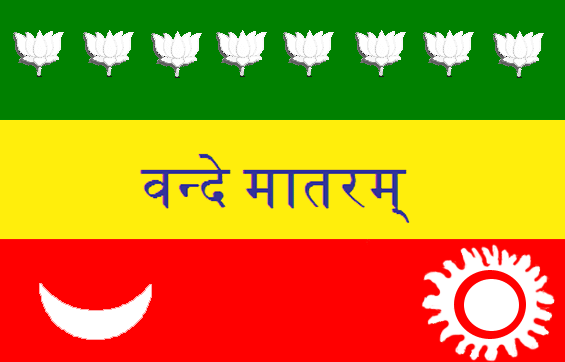
1907 Flag of India (Berlin Committee Flag):
Designed by Indian freedom fighters in overseas countries like Bhikaiji Cama, Vinayak Damodar Savarkar, and Shyamji Krishna Varma, the flag was first raised by Bhikaiji Cama at Stuttgart in Germany—thus becoming the first Indian flag to be lifted on foreign soil. It consisted of three horizontal color bands of green, saffron, and red, with symbols like the sun and crescent, and the phrase “Vande Mataram” inscribed upon it. This flag became the symbol of India’s increasing desire for full independence.
Image Credit: https://commons.wikimedia.org/wiki/File:1931_Flag_of_India.svg
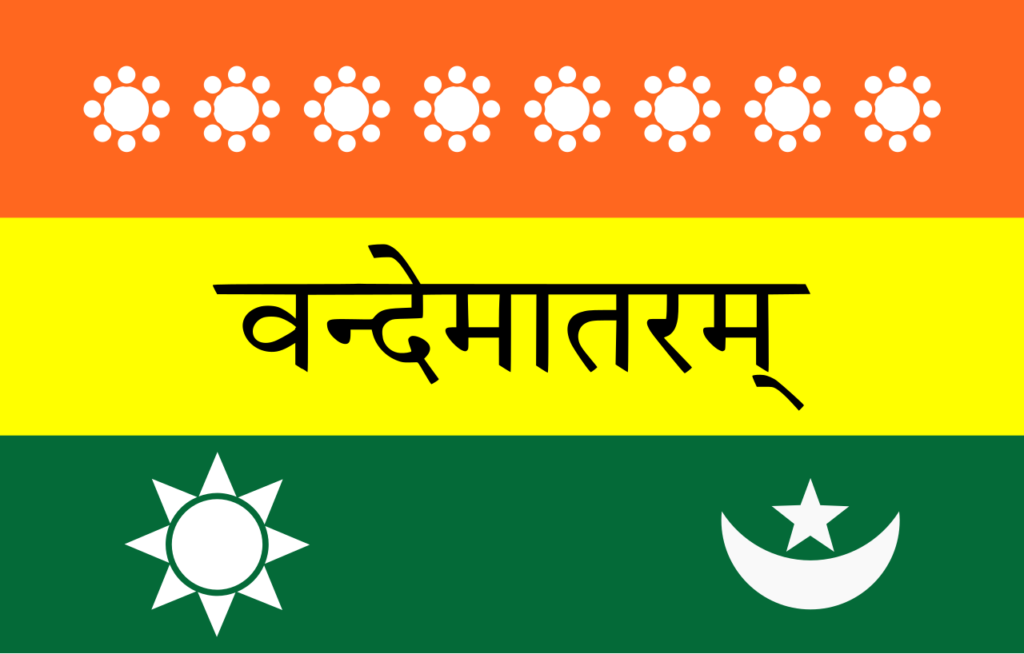
1917 Home Rule Flag:
First displayed during the Home Rule Movement by Annie Besant and Bal Gangadhar Tilak, this flag consisted of five red stripes and four green stripes alternatively placed, the British Union Jack at the top left corner, a crescent and star, and seven white stars formed in the shape of the Saptarishi constellation.
Image Credit : Mysid, Public domain, via Wikimedia Commons

1921 Gandhi’s Flag (Pingali Venkayya Design):
In 1921, Mahatma Gandhi proposed a flag designed by Pingali Venkayya featuring red and green bands representing Hindus and Muslims. A spinning wheel (charkha) in the middle indicated economic independence. White was later added to identify other communities.
Image Credit : Nicholas (Nichalp), Public domain, via Wikimedia Commons
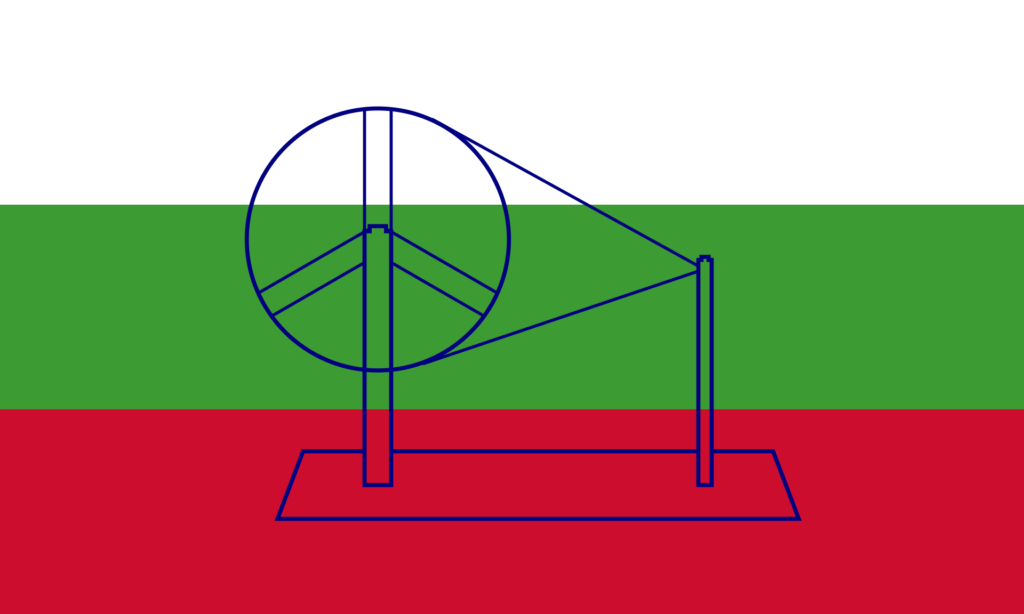
1931 Tricolour Flag (Adopted by Congress):
The 1931 tricolour flag—designed by Pingali Venkayya—had been formally adopted by the Indian National Congress at its Karachi session in August 1931 as the party symbol. With three horizontal stripes of equal size of saffron (at the top), white (in the middle), and green (at the bottom), it had a navy blue spinning wheel (charkha) at its centre.
Image Credit : https://commons.wikimedia.org/wiki/File:1931_Flag_of_India.svg

Adoption & Legal Recognition
On 22 July 1947, the Indian Constituent Assembly officially adopted the tricolour as the national flag of India, only weeks before independence. This version replaced the charkha with the Ashoka Chakra, a 24-spoked wheel derived from the Lion Capital at Sarnath, which symbolizes the eternal wheel of law (dharmachakra). On 26 January 1950, when India declared itself a republic, this flag was re-emphasized as the official national flag of India.
After independence, the Flag Code of India, 2002, was introduced to unify laws and regulations related to the display of the Indian national flag. It operates together with:
- The Emblems and Names (Prevention of Improper Use) Act, 1950
- The Prevention of Insults to National Honour Act, 1971
These legal codes guarantee that the flag of India is never treated disrespectfully and punish any act of disrespect (3 years’ imprisonment or a fine).
Design Specifications & Symbolism
The colour of the Indian national flag and its design are clearly defined in the Flag Code of India.
According to the Flag Code:
- The flag is a rectangular panel with a length-to-height ratio of 3:2.
- Nine standard sizes are specified, from large 6 300 × 4 200 mm down to 150 × 100 mm (for table flags). The Ashoka Chakra diameter scales accordingly—from 1,295 mm on the largest size to 25 mm on the smallest.
- The colours of the Indian national flag are precisely defined: saffron (Kesari) at the top, white with the navy-blue Chakra in the middle, and green at the bottom. In RGB values, saffron is #FF671F; white is #FFFFFF; green is #046A38; navy blue is #06038D.
- It consists of three equal horizontal stripes:
Saffron (Top Band) – Represents courage, sacrifice, and renunciation
White (Middle Band) – Stands for truth, peace, and purity
Green (Bottom Band) – Symbolizes growth, faith, and fertility
Ashok Chakra (Navy blue) (Center of the white band) – Features 24 equally spaced spokes, symbolizing the 24 hours of the day, continuous progress, and the eternal law of dharma.
The Chakra replaced the earlier spinning wheel to give the flag a broader spiritual and non-political appeal.
Manufacture and Materials
Originally, only hand-spun and hand-woven Khadi (cotton, silk, or wool) flags were allowed—sarcastically reflecting Gandhian philosophy as well as the Swadeshi movement’s insistence on self-reliance. Khadi bunting (for the flag body) and khadi duck (pole attachment) each adhere to strict specifications: 150 threads per square cm, four threads per stitch, and a weight of precisely 205 g per square foot.
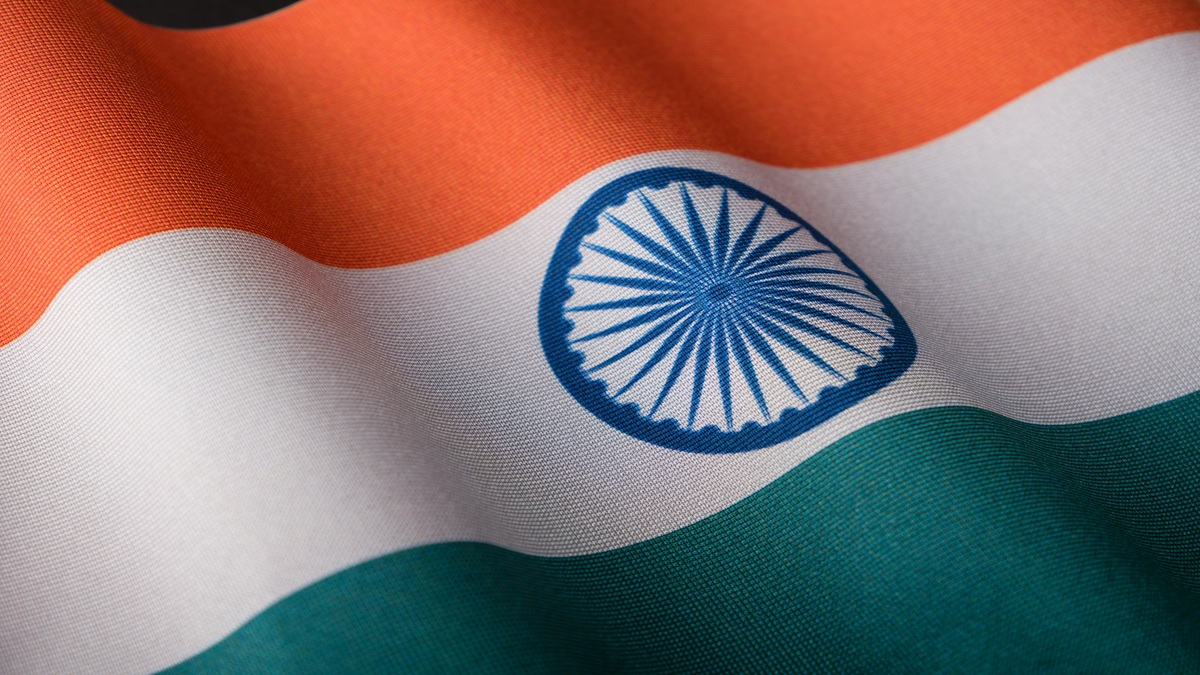
Since the 2021 and 2022 amendments, machine-made flags such as cotton, silk, wool, polyester, or blended materials are permitted by the Flag Code, rendering the Tirangā universally available without loss of dignity. The manufacture by approved units, such as BIS-certified units like the Karnataka Khadi Gramodyoga Samyukta Sangha at Hubballi, is one among a few suppliers with regulatory quality compliance.
Protocol & Etiquette: Flag Code of India
Use of the flag is strictly regulated:
Below are the key protocols outlined in the Flag Code of India for the correct display and respectful handling of the Indian National Flag:
- Design and Proportions
The flag must be rectangular with a 3:2 length-to-height ratio.
It must be made of khadi or machine-made polyester/cotton bunting approved by the Government. - Hoisting and Lowering
Hoist the flag briskly and lower it slowly and ceremoniously.
When flown from a flagstaff, the saffron band must always be on top.
Never allow the flag to touch the ground or floor. - Time of Display
Unless illuminated, the flag may only be flown from sunrise to sunset.
If flown at night, it must be fully illuminated by a dedicated light source. - Half-Mast Protocol
The Flag is flown at half-mast as a sign of mourning (e.g., death of dignitaries) only on occasions notified by the President or the State Governor.
To half-mast: first hoist to the peak for an instant, then lower to half-mast; reverse when lowering. - Order of Precedence
In a procession or on the same flag-staff with other flags, the National Flag takes the foremost or highest position.
No other flag should be placed above or to the right of the National Flag. - Display on Buildings
When displayed on a wall, the saffron band should be to the observer’s left.
On a balcony or rooftop, the flag should be affixed so it can fly freely. - Use on Vehicles
On official vehicles, the flag is mounted on a staff fixed to the front right fender (officer’s side).
Only dignitaries entitled to protocol can use the flag on their vehicle. - Prohibitions on Use
The flag must not be used as drapery, festoons, or for decoration (e.g., on caps, clothing, or cushions).
It must not bear any lettering, emblem, or design for commercial or private purposes. - Respect and Integrity
The flag must never be defaced, marked, disfigured, or used to cover statues.
Do not allow it to be dipped to any person or thing; even though ships may dip their ensign in salute, the Indian flag is never dipped. - Disposal of Worn-Out Flags
When the flag is soiled or damaged beyond repair, it must be destroyed in private by burning or any other dignified method. - Education and Display Days
Schools and institutions are encouraged to hoist the flag with proper ceremony on national days (26 January, 15 August, and 2 October).
Flag-hoisting ceremonies should include the national anthem and pledge. - Provisions for Citizens
Any citizen is free to hoist the flag on their vehicle or residence; they must, however, adhere strictly to all Code provisions. - Mass Displays
For large gatherings (stadiums, parades), ensure sufficient space so the flag does not touch the ground and that it is flown at the correct height. - Suspension of Display
On days or in areas where security or weather conditions make display unsafe, flag-hoisting may be suspended temporarily in consultation with authorities.
Flag in National Ceremonies
The national flag of India is significant for important national events such as Independence Day (15 August) and Republic Day (26 January). On Independence Day, the Prime Minister hoists the flag in an official ceremony at the Red Fort in Delhi, then gives an address to the country; while on Republic Day, the flag is unfurled by the President of India during the national parade at Kartavya Path. These days are marked by military salutes, cultural displays, and singing of the national anthem, and are generally broadcast live across the country. All levels of the armed forces, civil services, and local authorities are involved in arranging the events; and citizens stand to attention when the national flag is hoisted or, if it is in motion during a parade, if it passes the stage on which they are sitting during official ceremonies.
Controversies & Debates
There are long-standing myths: one myth says colours correlate exclusively with religious groups, but official symbolism is based on values expressed in the Assembly debates. High-profile judicial clarifications—such as in Union of India vs Naveen Jindal (2004)—reminded that the Flag Code was non-statutory, although the Supreme Court reaffirmed citizens’ qualified right to fly the flag under Article 19(1)(a), subject to dignity restrictions.
Misuse of national symbols—such as in the case of unsuitable flag rods, emblems on cars, or misuse in commercials—is actively being punished in most states now. In Karnataka, the state government ordered a stringent crackdown directive, including fines and cancellation of licenses for infractions; the Karnataka High Court also ordered the removal of unauthorized flag rods on vehicles. These indicate increasing enforcement under the law to preserve the dignity of the flag.
Comparative Perspectives
Relative to many democracies, India’s flag rule is relatively strict: the Flag Code, coupled with two distinct statutory enactments, applies rules more strictly than in some countries in which flag use is extensively commercial. The promotion of khadi and symbolic revisions also looks back to India’s distinctive history. However, as in other nations, India reconciles tradition with accessibility, employing contemporary fabrics under transparent guidelines, with respect.
Who made the national flag of India?
The national flag of India was designed by Pingali Venkayya.
When was the National Flag of India adopted?
The National Flag of India was adopted on July 22, 1947.




